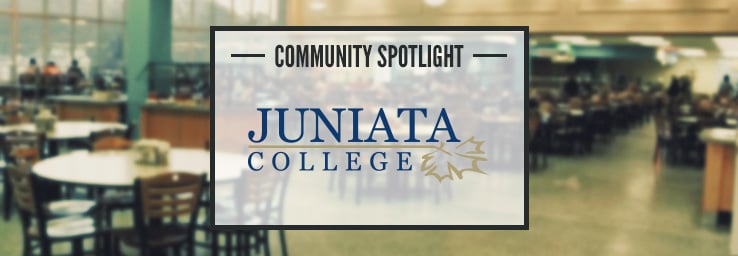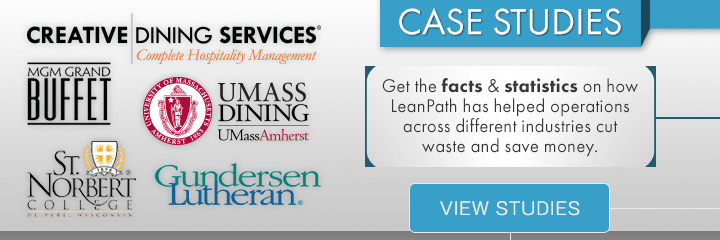Community Spotlight: Juniata College

LeanPath recently sat down with Executive Chef Matt Yoder from Sodexo Dining at Juniata College to learn about his team’s experience with the LeanPath program over the past four years. Juniata College was one of the first Sodexo campus locations to launch the LeanPath program in 2010 as part of the initial pilot program, and continue to be pleased with the program and their results.
Site Snapshot:
- 1,300 student on meal plans
- 2 dining halls—both using the LeanPath System
- Measuring pre- and post-consumer food waste
- Also using a pulper and composting to divert unavoidable food waste from the landfill
Tell us a little bit about your background and role at Juniata.
“I’ve been there for 3 years in October. LeanPath was here before I got here. I came from a background working in restaurants and hotels – this was my first campus job and first exposure to campus dining.”
What has your waste data helped you to drive down food waste?
“The two big areas have been trim waste and overproduction. Trim waste is the easiest to control because people can see it. You spot someone cutting too much off of a zucchini and you train them on better knife skills. Overproduction is more challenging—that’s where the dashboard really comes into play. You can see which meals and stations the overproduction is coming from. You can spot patterns and go to the station to get the real story on what’s happening. That becomes a ‘teachable moment.’”
What changes have you seen in your team culture?
“This [program] provides a bridge between their work life and their home life. I ask them ‘would you throw this away at home?’ and they always say ‘no.’ It’s the same thing here. It’s not just the money factor, it’s the wasted food and all of the resources, gas and fossil fuels it took to get it here.”
What have your results been?
“Since we started in the program in 2010, our pre-consumer waste levels are down 64%. You don’t know what you’re wasting until you see those numbers. It’s a great tool. The proof is right there—in the first year, you can see how much you save. On top of the money savings, there’s a huge environmental benefit. If we can be a part of a solution to make the [food waste] issue better, I definitely want to be a part of that.”
Some people might think when you reach low waste levels, you don’t need a monitoring system anymore. What do you think?
“Absolutely not. There’s an element of accountability. This keeps it top of mind. If you’re not thinking about waste, you can let your other initiatives take precedence. Once a system is in place, it needs to stay in place.”
